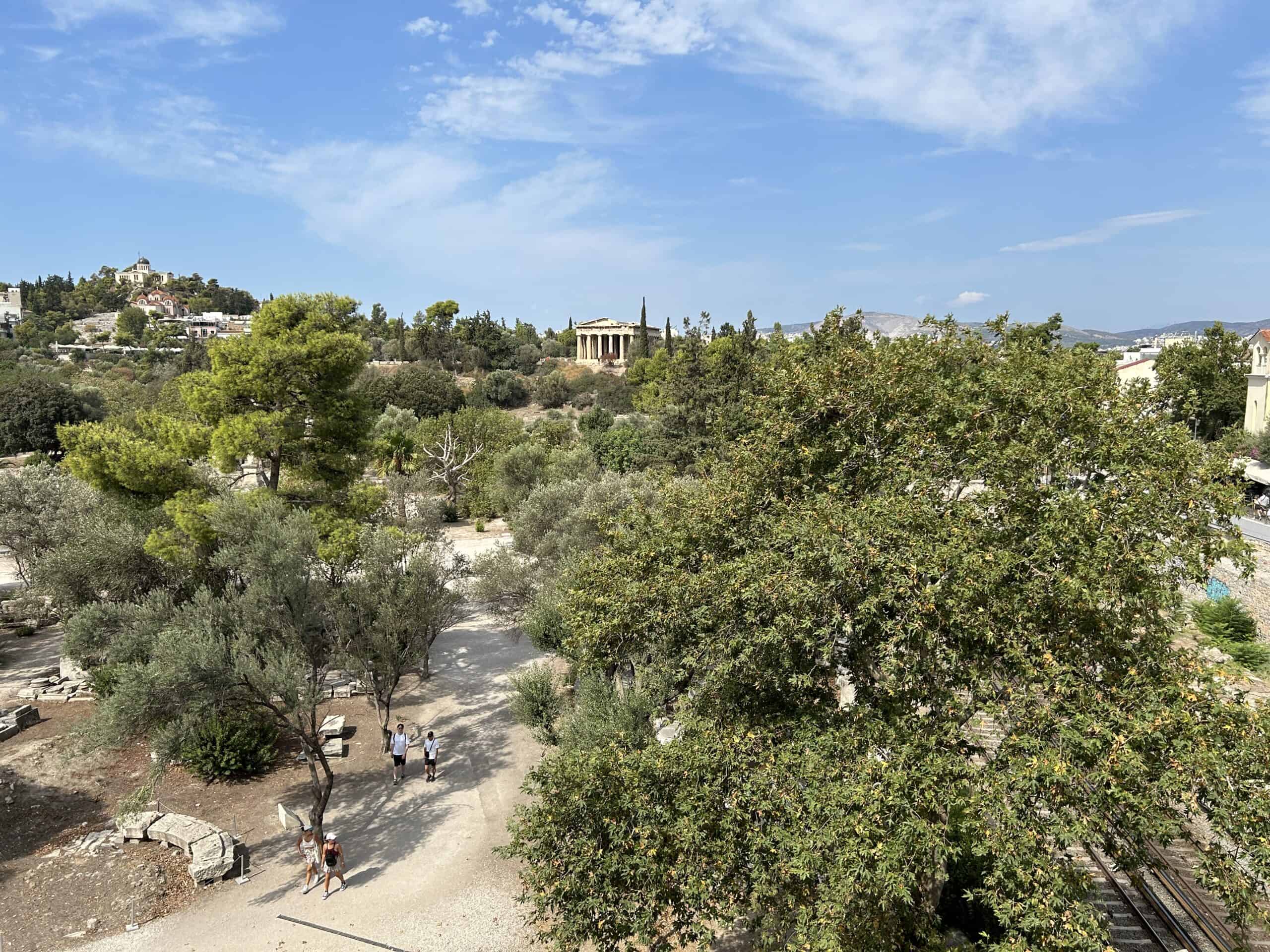I want to address the fact that I studied Greek at one point. Not modern Greek, but ancient Greek. In the summer of 2003, I attended UC Berkeley to participate in their Intensive Greek Workshop and was terrible at it. It moved at a pace I couldn’t keep up with, and I was far more interested in exploring the Bay Area (and its inhabitants) than staying in my dorm room to study Ancient Greek. That course, plus my senior year at Pitt, gave me some foundation for the language. The only time it ever proved helpful was by sounding out the occasional inscribed name on a Greek monument, so I hope I made all of those professors very proud.
Today was our Athenian ruins and museums day. The city was a furnace by 10 AM, so we reserved museums for the peak heat in the afternoon. We grabbed something from a bakery in our neighborhood called Bread Factory and headed for stop #1: The Acropolis. A quick vocabulary note: the Parthenon is the temple that dominates the hill of the Athenian Acropolis.
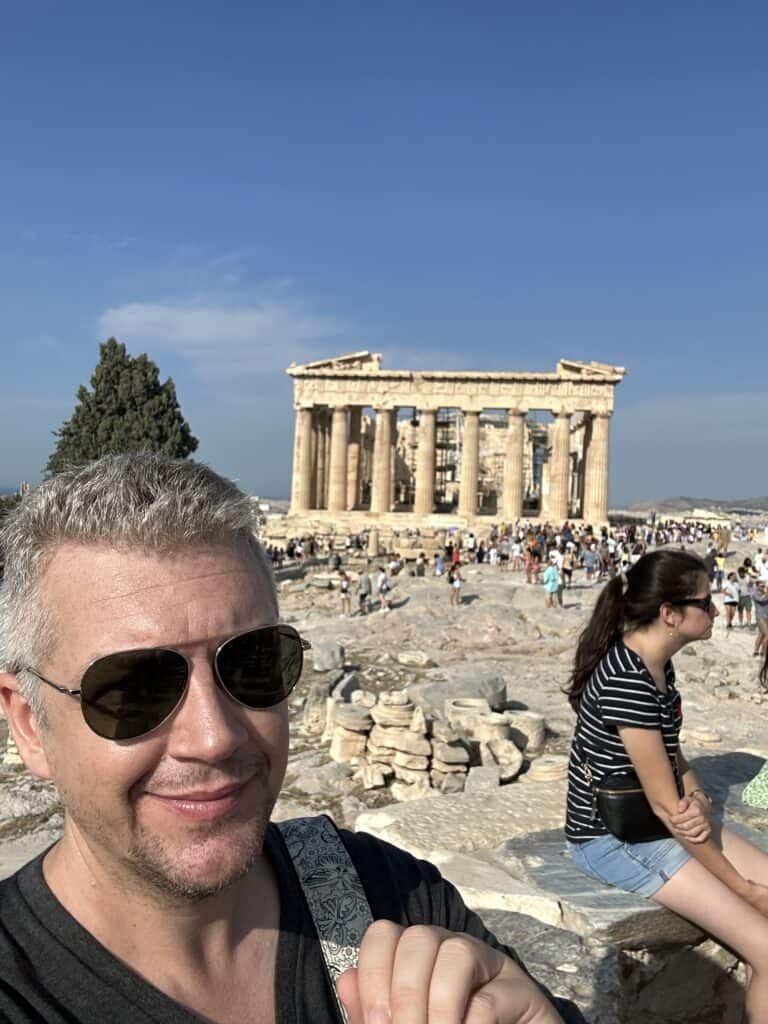

We took the advice we received and entered the South Slope gates. This is not the main gate, but it is still very crowded. This is how many tour groups exit, so you work against the flow of people but miss some of the extraordinarily pressing crowds.
Finally, you go to the top and see the Parthenon in all its looted glory. Of course, the British continue to hold some of the most precious artwork hostage in London, like the misleadingly named Elgin Marbles. The heat and crowds make the visit overwhelming, but you can find a seat and enjoy it all if you get there early enough. When we were leaving, the crowds had grown substantively, so I was glad we went as early as we did.
We explored more ancient ruins, including the ancient Athenian Agora. The Athenian Agora was the heart of ancient Athens; it served as the civic, political, religious, and commercial center. Agora means marketplace, but it is one of the first words you learn when studying ancient Greek. You conjugate so many verbs using it in a sentence.
“He went to the agora.”
“He’s in the market.”
“The teacher will be in the market.”
There is something very special about treading the same paths I’ve read about countless times. Socrates, Plato, and Aristotle all frequented the marketplace, having discussions and debates about the world. Even the apostle of Early Christian Paul supposedly preached in the agora. You are genuinely in the footsteps of some of the most influential people in our history.
The grounds have a pretty good museum in the Stoa of Attalos, which has a lot of great sculptures. The other end of the grounds is the Temple of Hephaestus. I always liked the story of Hephaestus. He was the god of fire, blacksmiths, sculptors, and volcanoes. It’s a cool portfolio. He seemed less frivolous than many other gods, just someone who got up and worked every day. It’s a nice temple. There are also a lot of cute, sleepy cats all around.
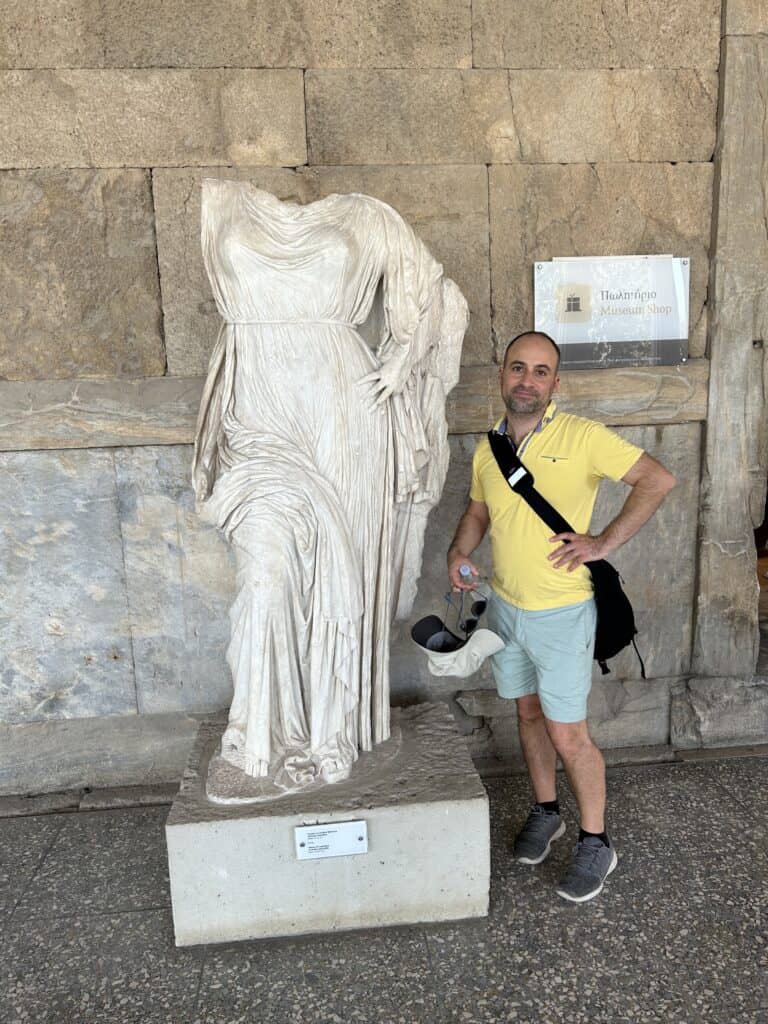
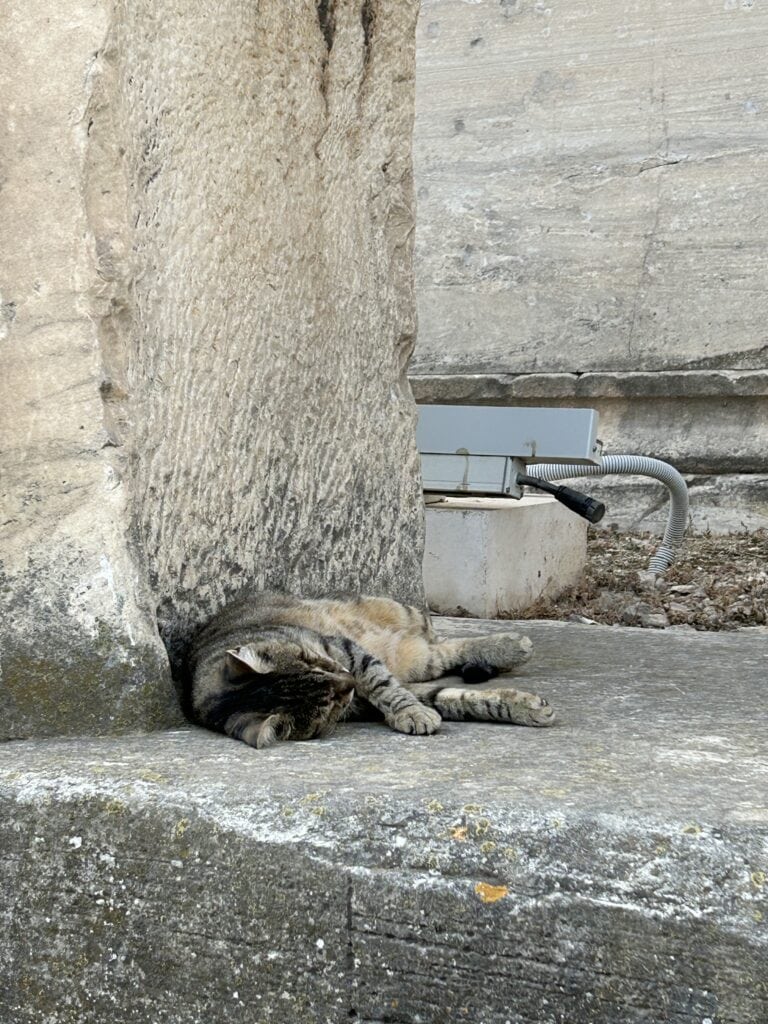
When we finished with the ruins, we did some shopping and grabbed a juice and a coffee from a local place called Xymopoieio. The Monastiraki Flea Market was happening, so there was a lot of junk to sift through. We were only on the second day of the trip, so I did not buy anything. I saw one painting that interested me, but was it framed and fairly large. I did not want to figure out how to deal with it for the remainder of the trip. Joe was on a mission to buy a figurine of Asclepius, the god of medicine, which he would be hunting for our entire trip.
In the afternoon, we went to the National Archaeological Museum, and I left my traveling phone in the taxi when we got to the museum. This place is a treasure trove of ancient Greek artifacts and the greatest history museum I have ever visited. This museum has the Mask of Agamemnon, the leader of the Greeks in the Trojan War, and it could be from 1600 BCE. There was a fantastic Statue of the god Sarapis Amun Agathodaemon, a fusion of Egyptian and Greek religions.
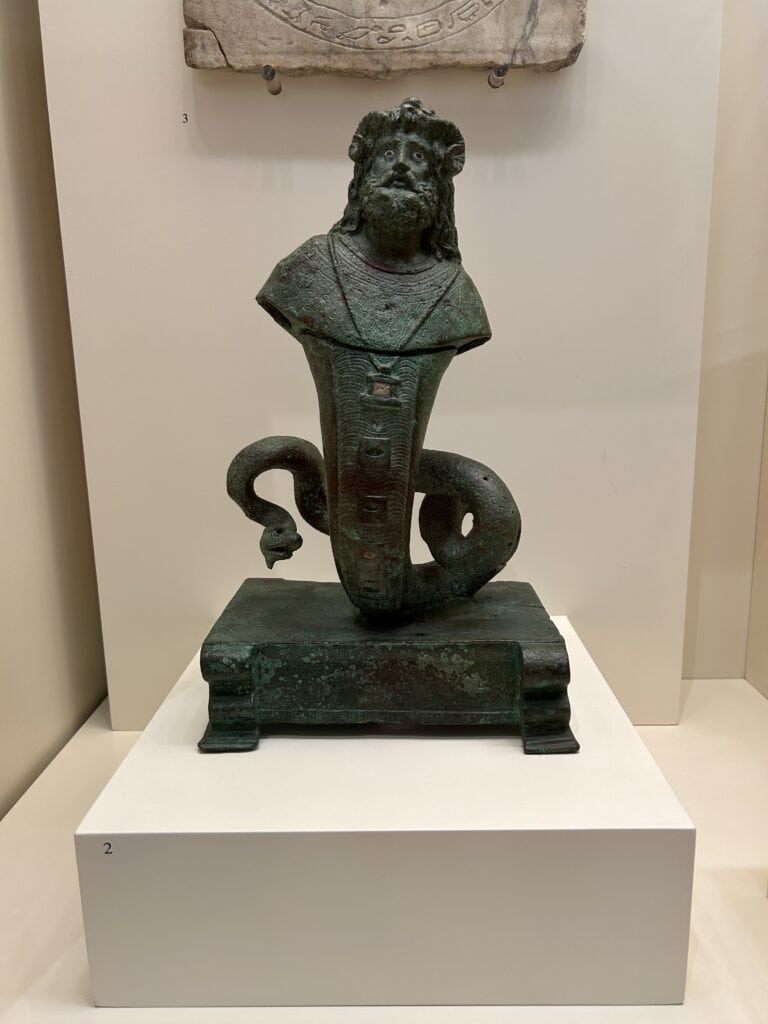
One of my greatest feelings is discovering something unexpected in a museum. It doesn’t happen that often because I typically read the brochure while there, thus spoiling the highlights. It often occurs in an art museum when you turn a corner and see a less famous Monet painting, but here it happened. Without knowing it, this museum holds the Antikythera Mechanism.
The Antikythera Mechanism is the oldest analog computer known to our species. It’s from 150 BCE. It is a model of the Solar System and was used to predict astronomical positions. It’s an incredible technology for being so old and hints at the sophistication of the ancient world. I’ve seen countless conspiracy videos on YouTube about it, and it plays a role in the latest Indian Jones movie, but here it was. Right in front of me. Incredible, and I had not realized it was going to be there.
In the late afternoon, there were more opportunities to escape the sun, so we did a little hiking around the Acropolis. We walked up to the Philopappos Monument, where we found a great place to sit and enjoy the view of the entire city. It’s very beautiful, and there are places to sit and relax.
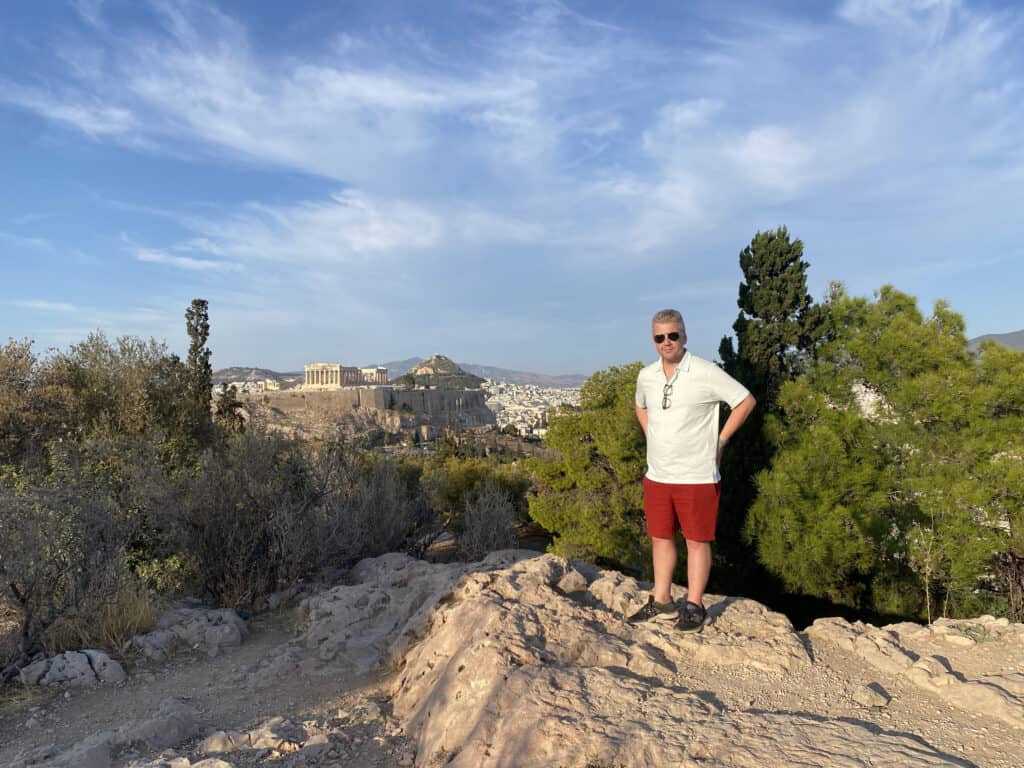
For dinner, we went to Pyroliki. We were trying to get into Raeti Cretan restaurant, but it was full. I loved where we ended up. They had a nice courtyard to sit in, and the food was modern Greek. You would recognize all of it as the Greek food you know well, but it was executed with a high level of precision. It was not a tourist trap, and it felt like a place where an Athenian foodie would go to get good food. I totally enjoyed this meal.
We took a taxi home and relaxed on our balcony, enjoying the view of the Parthenon before bed.
Next: Greece – Day 3: Delphi
